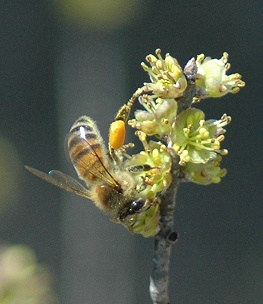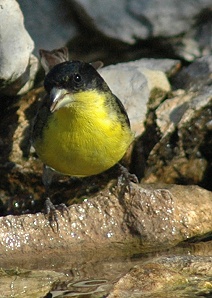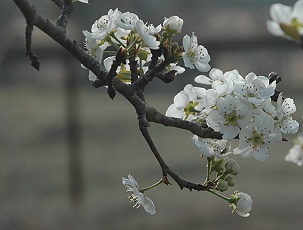
New Photos
March 5, 2006
 |
 |
| The elbowbush is the first really obvious wildflower to show up in spring; in dry years, the glowing gold lasts only a day or so. Every branch is covered with tight clusters of tiny yellow flowers. | The bushes hum with bees. Each flower gives only a tiny bit of nectar, so the bees are constantly in motion, clambering over the flowers and flying briefly from one cluster to another. A little later than this, the stamens turn red, and the individual flowers look almost like fireworks going off. |
 |
|
| Immediately after the cold rain last weekend, as the sun warmed the pond, the tadpoles came up to the shallow water. This one ventured out of the pond proper into the overflow of the lily pond, where the water was only about an inch and a half deep and much warmer than the rest of the pond. | |
 |
|
| The black vulture has pale patches at the wingtips, and this one was soaring lazily in the spring-blue sky. | |
 |
 |
| In spring, the male house finches turn from a soft rosy color to this brilliant red and stick close to the striped females. | This male lesser goldfinch is in full spring coat--though with the lesser goldfinches it's hard to tell; the males are this bright all the time. |
 |
 |
| In the summer and fall, the buckeye butterflies are large and richly colored. This is a winter survivor, small, darker than usual, with tattered wings. It's eager for the nectar in these Mexican plum blossoms. The butterflies showing up in the last week include this buckeye, an American snout, and a hairstreak I didn't ID (but probably a juniper hairstreak--it was hovering around an Ashe juniper. | |
 |
|
| The pears definitely think it's spring. | |
![]()

